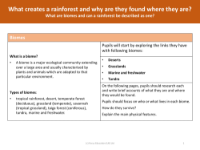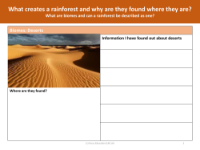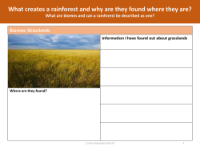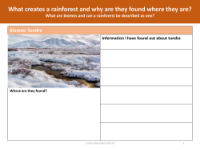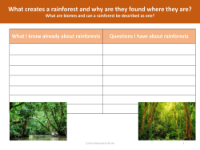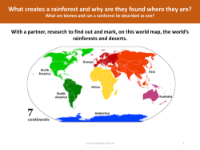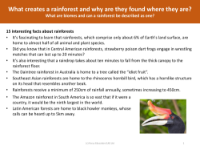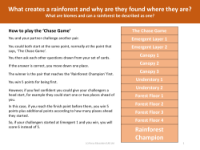What are biomes and can a rainforest be described as one? - Teacher notes
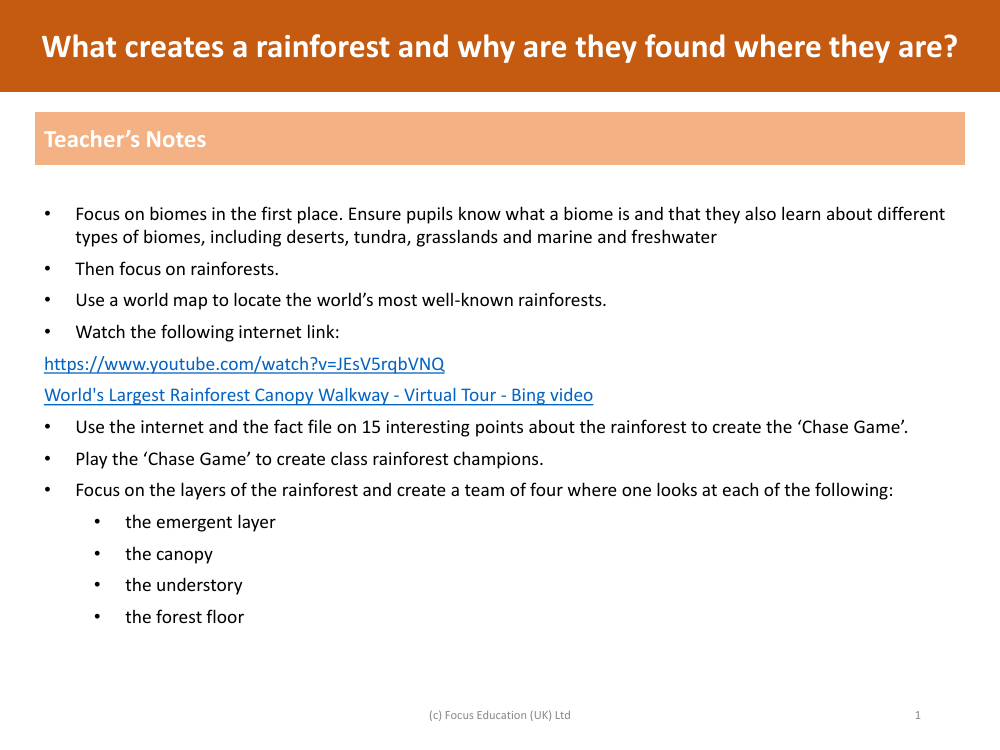
Geography Resource Description
Biomes are large ecological areas on the Earth's surface, with flora and fauna adapting to their environment. They are often defined by factors such as climate, soil, and the types of plants and animals that live within them. In educational settings, it's crucial for pupils to understand the concept of biomes and recognise the different types, such as deserts, tundra, grasslands, and aquatic biomes like marine and freshwater. This foundational knowledge sets the stage for a more in-depth exploration of specific biomes, such as rainforests.
Indeed, a rainforest can be described as a biome, one that is characterised by high rainfall, dense vegetation, and a rich diversity of species. Teachers can enhance students' understanding by using a world map to identify the location of major rainforests and by utilising multimedia resources, such as virtual tours available online, to provide an immersive learning experience. Interactive activities, like the 'Chase Game' based on rainforest facts, can engage students and help them become 'rainforest champions'. To delve deeper, students can study the distinct layers of the rainforest—emergent, canopy, understory, and forest floor—working in teams to explore each layer's unique ecosystem. This comprehensive approach not only educates students on what creates a rainforest and its global distribution but also fosters a holistic appreciation of this vital biome.

